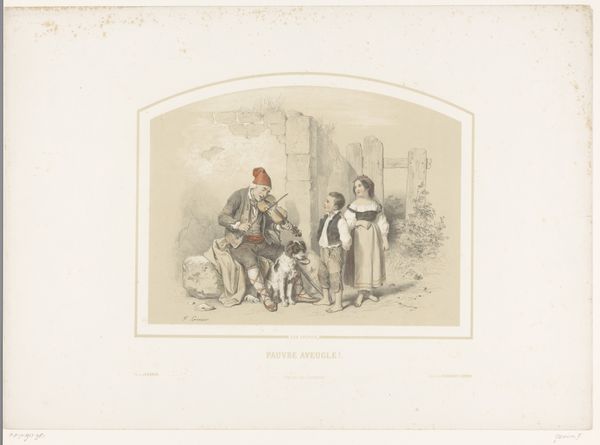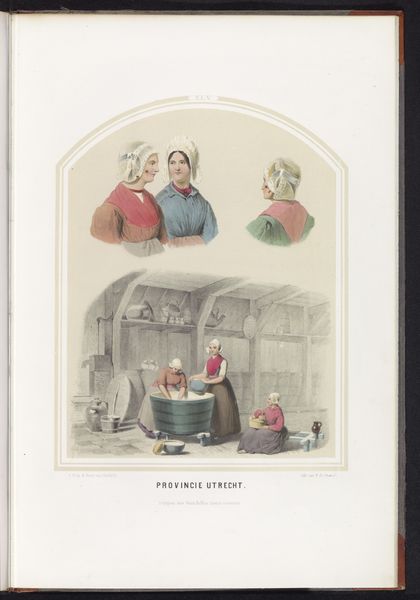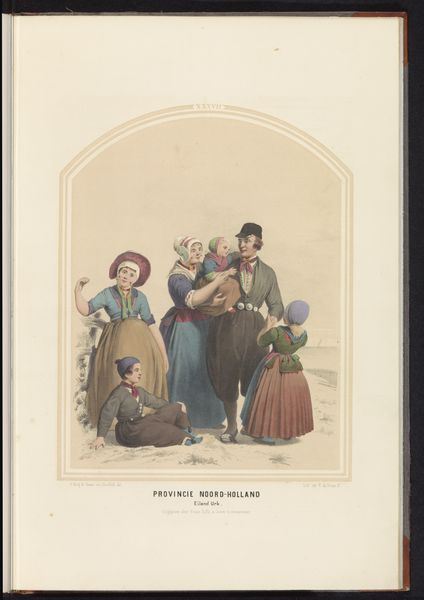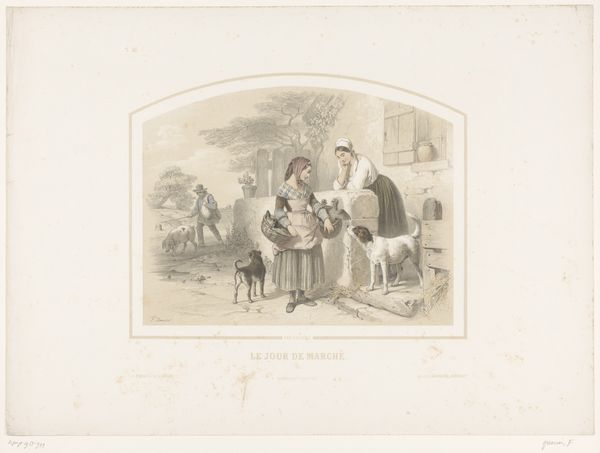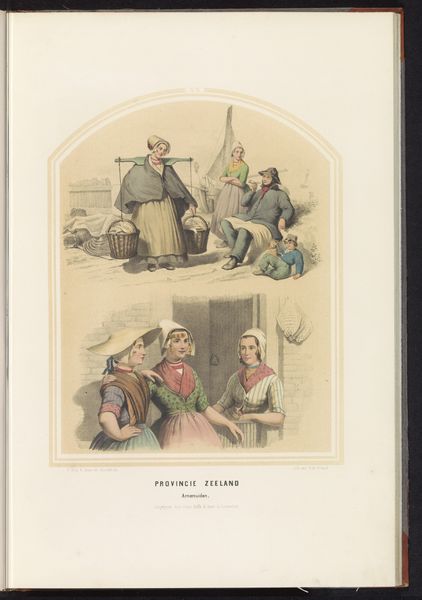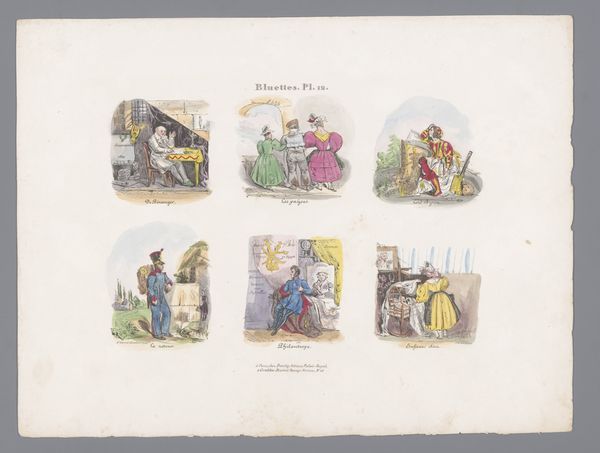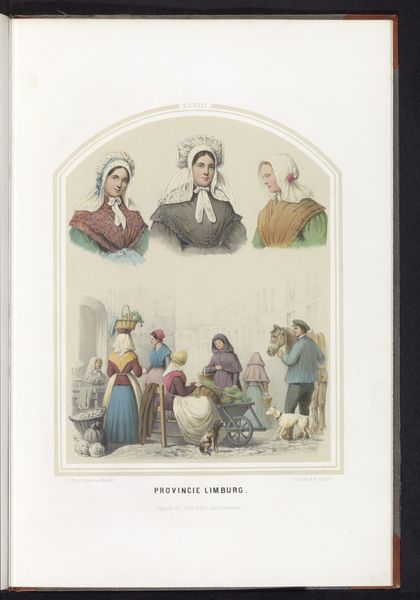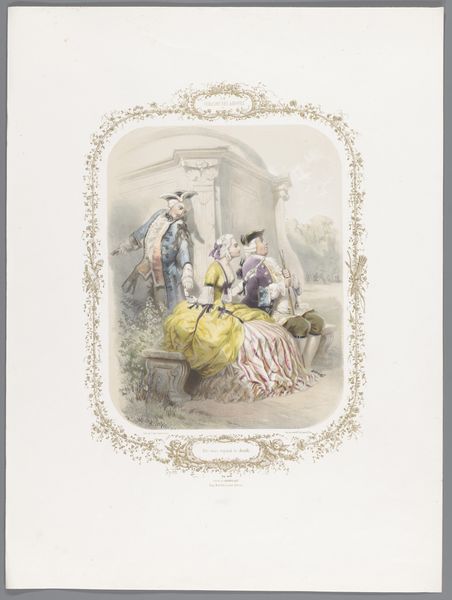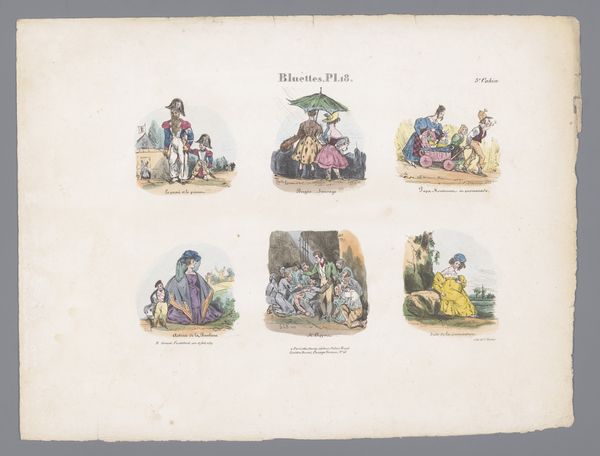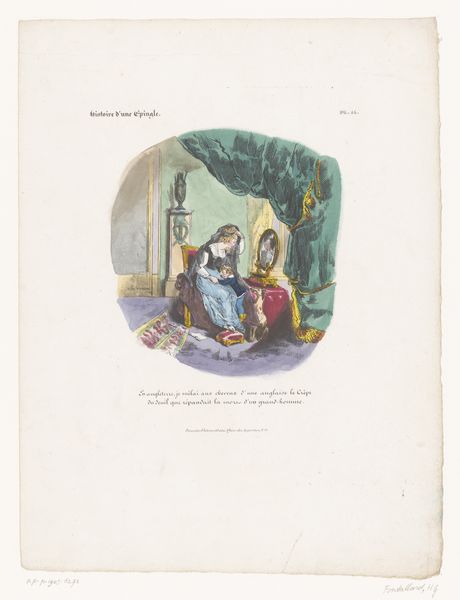
Dimensions: height 523 mm, width 350 mm
Copyright: Rijks Museum: Open Domain
Curator: Right, let's dive in. We're looking at "Klederdracht van Scheveningen in Zuid-Holland, 1857," which roughly translates to "Traditional Costume of Scheveningen in South Holland, 1857." This print uses watercolors and colored pencil, showcasing figures that, as the title implies, represent regional clothing. Editor: Ah, immediately I'm struck by its almost fairytale quality. It feels both meticulously observed and dreamlike. The layering of images, the gentle hues, and the almost self-conscious display of costumes give it a strange sense of artifice. Like a play set, maybe? Curator: Absolutely. It's very staged, a deliberate record. Remember, in the mid-19th century, there was a rising interest in folklore and preserving regional identities, often tinged with Romantic nationalism. This image becomes a way to document and, in a sense, codify what "Scheveningen" looks like. Editor: Which brings up a point, doesn't it? Who is this "Scheveningen"? Is it an idealized version, packaged for outside consumption? Look at the central woman with the basket on her head - her posture is almost too perfect. And the boy, so nonchalantly leaning against the cart, feels deliberately posed. Are they players in a bigger theatre? Curator: Exactly! There's a level of constructed identity at play here. The details are fascinating, though: the various headdresses, the layered fabrics, all indicators of social status and local traditions within this small fishing community. This artist, Ruurt de Vries, is cataloging, really. Making this information, visually and therefore politically, available to his contemporaries and descendants. Editor: But the dogs! We can’t forget the dogs, slightly forlorn but ever-present. Perhaps they are witness to all the people have built for themselves—costumes, stories, even nations—they were just existing. As for us, well, perhaps that's why the overall feel is bittersweet, with just a tiny hint of wryness mixed in? A sense of the beauty and burden of tradition. Curator: That's a beautiful way to put it, the "beauty and burden". De Vries leaves us with a snapshot of a constructed past.
Comments
No comments
Be the first to comment and join the conversation on the ultimate creative platform.
